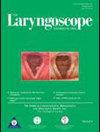Viability of Free Bone Graft in Combination With Free Tissue Transfer and Post-Operative RT in Orbital Floor Reconstruction
Abstract
Objectives/Aim
Orbital floor reconstruction post cancer ablation is challenging especially when associated with extensive soft tissue defects. Due consideration is to be given to the possible toxicities of adjuvant radiotherapy as well. Free bone-soft tissue flaps are ideally suited in such situations. However, a single flap may fall inadequate for large defects. Using two free flaps in combination increases operating time and donor site morbidities. Non-vascularized bone grafts combined with large soft tissue flaps harbor the risk of bone resorption and osteo-radio necrosis. Alloplastic implants can lead to exposure and infection. We conducted a study researching the outcome of non-vascularized cortico-cancellous iliac bone graft (NVCIBG) used in orbital floor reconstruction along with free anterolateral thigh (FALT) flap in subjects undergoing extensive surgical ablation and adjuvant radiotherapy.
Materials and Methods
Ten consecutive subjects who underwent maxillo-mandibular resection with or without skin were included in the study. The parameters assessed were diplopia, ectropion, bone viability, and osteointegration. Subjects were assessed in the immediate post-operative period, 1 month after surgery, and after 1 year of radiotherapy.
Results
The size of iliac bone harvested ranged from 3 to 5.5 cm (mean 4.8 cm). Forty percent subjects complained of binocular diplopia in the initial post-operative period which subsided subsequently. Thirty percent subjects developed ectropion all of whom required external skin reconstruction. None developed osteoradionecrosis.
Conclusion
NVCIBG along with FALT flap is an excellent reconstructive option for orbital floor defects. It can withstand the toxicities of adjuvant radiotherapy and avoids the need for double free flap reconstruction.
Level of Evidence
4 Laryngoscope, 135:1072–1077, 2025


 求助内容:
求助内容: 应助结果提醒方式:
应助结果提醒方式:


